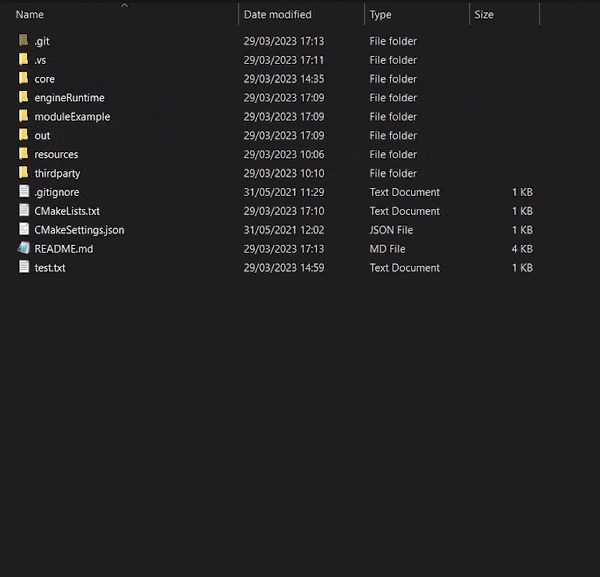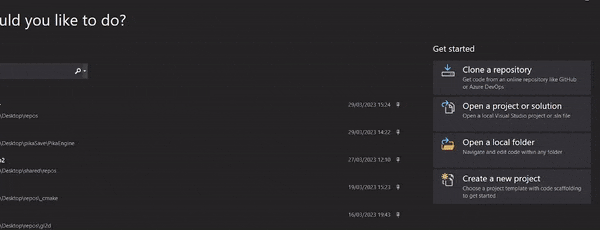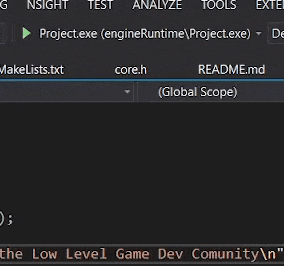Opening the Solution:
Or
Running the setup
Go to CMakeLists.txt, CTRL + S to make sure the solution was built.
Then, from this dropdown select mygame.exe
Ctrl + F5 to build (F5 oppens the debugger, you usually want to press Ctrl + F5 because it oppens faster like this.
Adding files:
You should add .cpp in src/gameLayer and .h in include/gameLayer. Whenever you add a new file CMake will ask you if you want to add that thing, say NO every time! I am already adding all of the things.
If you accidentally say YES, just remove that file from the CMake.lists
Refreshing your changes:
After you add a file, the changes should be automatically added but if you want to be sure, you can refresh changes by saving the CMake file. If you want to make a hard refresh (you might have to do that sometimes) close Visual Studio, delete the out folder, reopen VS, CTRL + S on CMakeLists.txt
gameLayer.cpp has the game main loop. Add your files in scr/gamelayer and include/gamelayer. Look at the example provided to see how to acces user input. Also you have to use the RESOURCES_PATH macro to get to your assets path.
To ship the game: In Cmakelists.txt, set the PRODUCTION_BUILD flag to ON to build a shippable version of your game. This will change the file paths to be relative to your exe (RESOURCES_PATH macro), will remove the console, and also will change the aserts to not allow people to debug them. To make sure the changes take effect I recommend deleting the out folder to make a new clean build!
- Keep the code procedural and data oriented.
- Try to use CamelCase, and FULL_CAPS_WITH_UNDERSCORE for constants.
- Classes start with capital letter.
- Use structs rather than classes.
- Use the provided assertion function to safeguard your code. (permaassert / permaassertcomment)
- Objects shouldn't use desctructors, rather init and clear methods.
- Preffer functions rather than objects, create objects if it makes sense (you need to save some data)
- Systems will probably be objects, if so, pass them around by refference.
- You should add stuff in the gameLayer folders, not platform folders. And you probably shouldn't touch anything in the playform folders.
- Put the files like game textures in the resources folder, to reffer to them always use the RESOURCES_PATH macro_
- Use #pragma region to structure the code better
- The entry point is main.cpp (the real one is glfwMain.cpp but you shouldn't make changes there)
- Use todos in the code, and also put your name when you use them. EG //todo (LLGD): add minecraft S*X update
- The ingame size of a tile is 1
- A box is stored in a vec4 and works like this: {X, Y, Width, Height}, this includes player position box, and rendering things


